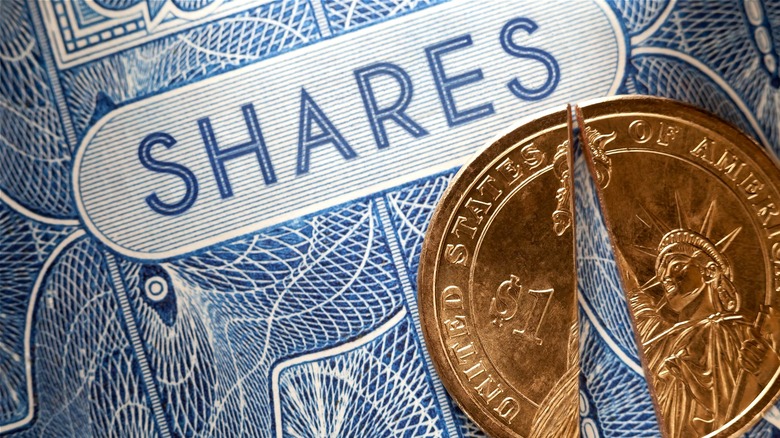What Is A Stock Split And How Does It Work?
A $1,000 investment in retail giant Amazon in 1997 would be worth about $2.4 million today. A large reason for that phenomenal gain is that Amazon stock has split multiple times. One single share of Amazon stock from its 1997 initial public offering is equal to 240 shares today due to repeated stock splits over the years.
More recently, Nvidia — a semiconductor firm that supplies the AI industry, among others (and one of the best-performing stocks of 2023) — announced a 10-for-1 stock split. Following that news in late May 2024, Nvidia was trading at more than $1,000 per share versus just over $495 per share to close 2023. Besides the stock-split news, the price of Nvidia shares was also propelled by a healthy earnings report and an increase in the dividend paid to investors.
With all this talk of stock splits, you might be wondering how exactly the process works? Some companies, like Nvidia or Amazon, will opt to split their shares of stock when the price of a single share becomes too high for average investors to afford. Increasing the number of outstanding shares while simultaneously lowering the price-per-share makes a company's shares more attainable for smaller investors to purchase, which creates the byproduct of increased liquidity.
The most common stock split ratios are 2-for-1 or 3-for-1, which will reward investors with two or three new shares, respectively, for each of their existing shares. Splits are permissible in any quantity, however.
Splits make companies accessible to smaller retail investors
As mentioned, by lowering the prices of each share, a company increases its liquidity. For example, an investor with $350 in cash in their trading account can't even purchase one share on Nvidia at its current $1,000-plus price. After the stock splits on a 10-for-1 basis on June 7, 2024, however, that same $350 can purchase more than three shares at $105 each, which is the new split-adjusted fair value estimate.
Besides attracting more investors, a company's lower stock price and proportionally greater number of outstanding shares can also reduce the bid-ask spread, which is the difference between buying and selling prices. For instance, it might cost an investor $9.70 to buy a share of stock, while that same market maker is only offering $9.60 to buy shares from investors. That 10-cent bid-ask spread is a profit that goes to the security's market maker.
Note that electing to split its stock doesn't affect the value, also called the market capitalization or "market cap," of a company. To illustrate this, let's look at a company with 100 shares of outstanding stock at a price of $2,000 each. If the company decides to do a 4-for-1 (sometimes expressed as 4:1) split, the result will be 400 shares trading at $500 each. As you can see, the company's market cap of $200,000 remains unchanged.
Why is a stock split typically bullish?
So if a stock split has no impact on market cap, then why is it typically viewed as a positive, bullish event? To begin, a new lower share price alone may attract renewed attention from investors. Next, a split can be viewed optimistically as the company wanting a longer pathway to increased growth and a sign of confidence by management. In fact, in many cases, company stocks that have undergone splits return to — or surpass — the old pre-split price, only loyal investors now own a significantly greater number of shares.
If a company's stock again reaches stratospheric prices in the years following a stock split, it can opt to do further stock splits. In an extreme case, shares of retail giant Walmart split no less than 11 times over three decades. An investor who purchased one share of Walmart in 1970 would own exactly 2,048 shares today without buying any additional shares.
If there's any downside to a stock split, it's that the process is expensive for the company involved. There's a ton of regulatory oversight, which requires pricey legal assistance. Of course, the process is seamless for investors, who will see the number of shares and price adjusted automatically in their investment accounts (see our list of the best investment apps for beginners) without requiring any action on their part. As well, receiving additional shares won't result in an unexpected income tax bill, and the tax basis for the shares remains unchanged.


